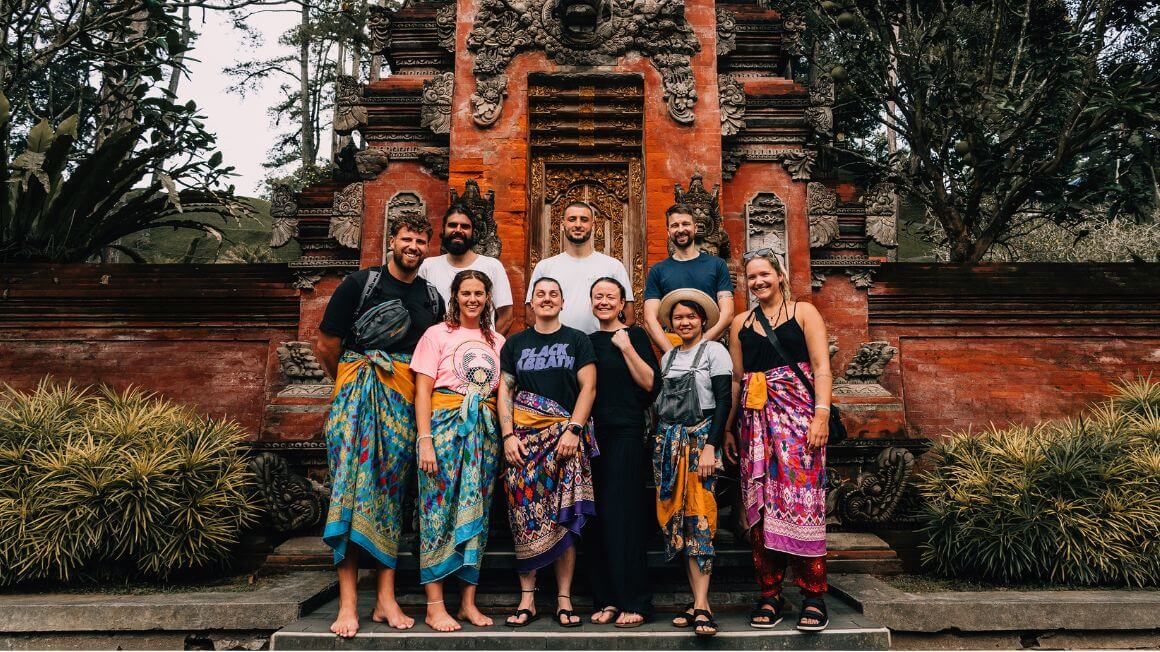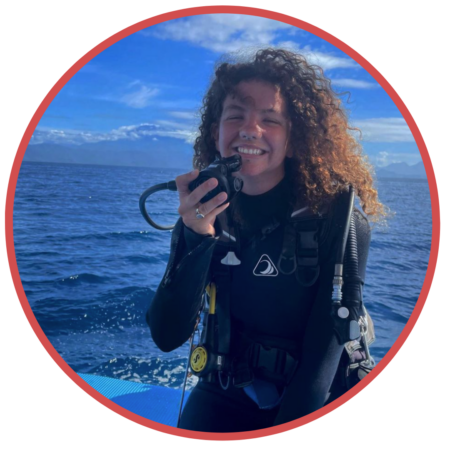The Broke Backpacker is supported by you. Clicking through our links may earn us a small affiliate commission, and that's what allows us to keep producing free content 🙂 Learn more.
If you’re remotely into whats going on under the sea, then Baja California, Mexico has probably long been on your bucket list. If not, you gotta put it on NOW.
This is the real-life version of the Little Mermaid, and here, Mobula Rays are the main event. Every summer they migrate in their hundreds of thousands and put a real show on for their mates and the humans lucky enough to witness.
Spotting any kind of ray in the wild is magic, but the sheer volume you get in Baja is on another level. Truly mind boggling stuff. If you’re after a wildlife experience that feels genuinely raw and untouristy, this is honestly one of the most magical moments you’ll be able to have with our ocean friends.
This guide covers everything you need to know to catch the migration—from the best times and places to go, to what to expect once you’re there. If there’s one thing you can expect, it’s that you’re in for a treat.
Let’s get into it—mask on, fins ready.
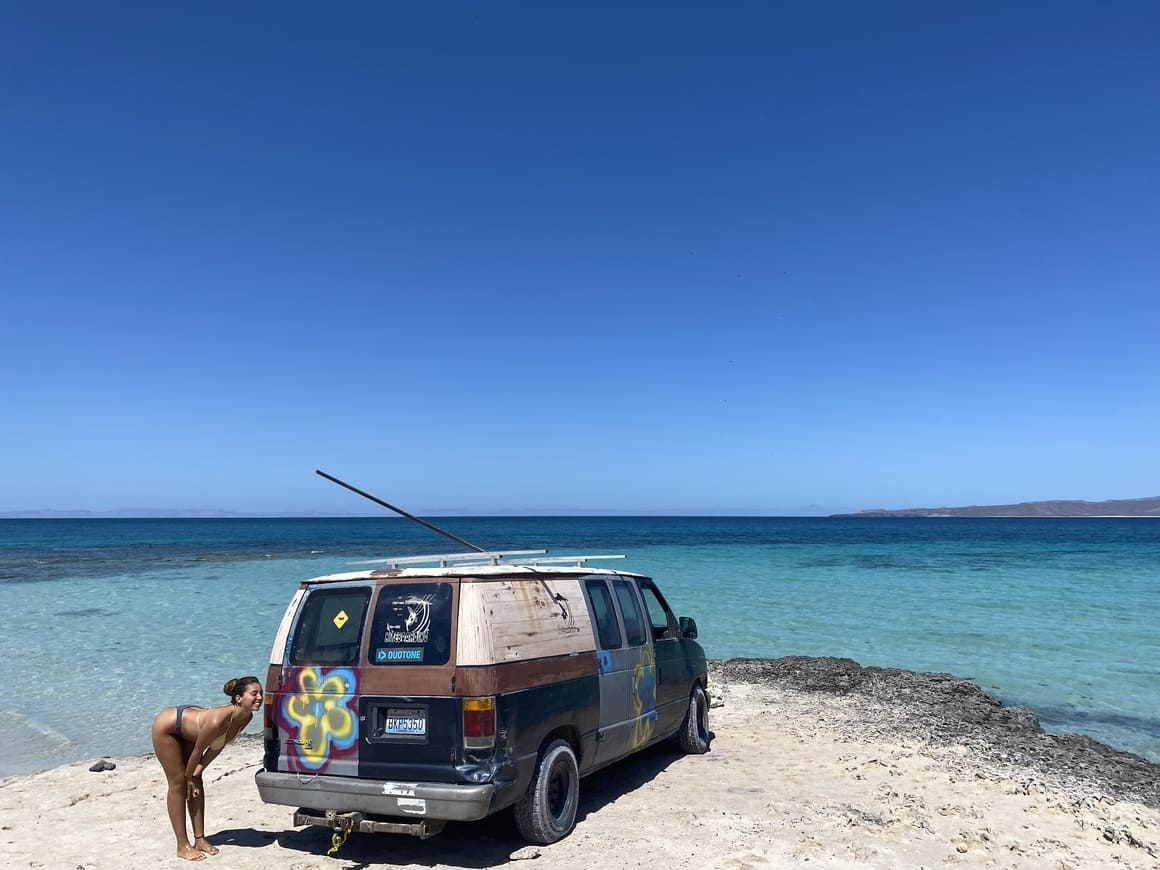
Photo: Audy Scala
The Broke Backpacker is supported by you. Clicking through our links may earn us a small affiliate commission, and that's what allows us to keep producing free content 🙂 Learn more.

Unlock Our GREATEST Travel Secrets!
Sign up for our newsletter and get the best travel tips delivered right to your inbox.
- What are Mobula Rays?
- When is the Best Season to Spot the Mobula Ray Migration?
- Where is the Best Place to See The Mobula Ray Migration?
- How to Interact with Mobula Rays Responsibly
- Top Tips for Seeing The Mobula Ray Migration
- Where to Stay in Baja
- FAQs about Mobula Ray Migration
- Final Thoughts on the Mobula Ray Migration in Baja California
- Buy Us a Coffee!
What are Mobula Rays?
Mobula rays are magical, magical creatures. The ones we’re referring to more specifically in Baja, though, are devil rays. The baby bros of Manta Rays, they are very often mixed up with them, but are notably much smaller and behave very differently from Mantas.
The Munk’s Devil Rays are the headliner of the Mobula Ray Migration and the ones you’ll see the most often in Baja. They’re the smallest of the bunch (about 1 metre wingspan), but show up in massive, tightly-packed schools. You’ll also have the opportunity to spot some Bentfin Devil Rays, but these rays are a lot more solitary and stay on the big flashy surface aggregations.

What devil rays lose out on in size, they make up for in attitude. The rowdier little brother of the docile Mantas, these little devils jump out of the water in quite a display of theatrics. There is much speculation as to why they do this, but it’s mostly assumed that this behaviour is to communicate with one another and attract others during mating season.
Other theories range from ridding themselves of parasites or just that it’s just cool AF. Can you blame ’em?
Considering the theatrics, devil rays are actually pretty shy around humans. You are best off witnessing the Mobula Ray migration by boat or snorkelling, as the bubbles from scuba diving actually scare them away!
Essentially… you’re gonna wanna pack yo’ bags and travel to Mexico to see these guys.
Mobula vs Manta Rays
Manta and devil rays were both considered long-lost cousins once upon a time, but recent discoveries have actually uncovered that Mantas and Mobulas are more alike than we previously thought, though.
Here’s where it gets fun: Science has decided that mobulas and mantas aren’t just distant relatives—they’re actually all in the same gang now. Lumping them into the Mobula genus, too, technically, mantas are just massive mobulas. Who knew?
Devil rays actually make up seven out of the ten species of this family, with the Munk’s Devil Ray being the most common.
| Devil Rays | Manta Rays | |
|---|---|---|
| Size | Wingspan of 1-2 metres | Up to 7m (often bigger) |
| Behaviour | Mobulas are the show-offs. They’re known for their leaping behaviour—shooting out of the water, flipping mid-air, and crashing back down like lil Olympians. | Mantas don’t leap nearly as often. They’re more chill, gliding gracefully through the water, usually solo or in small groups. |
| Social Life | Mobulas travel in huge schools, especially during migration. It’s not uncommon to see thousands packed together like an underwater traffic jam. | Mantas are more solitary or hang out in smaller, looser groups—unless they’re at cleaning stations or during feeding frenzies. |
| Habitat | Mobulas are often found closer to the surface and in coastal areas during migration. | Mantas prefer deeper, offshore waters but do come inshore at times, especially around cleaning stations or reef systems. |
| Horns | Devil rays have shorter, more pointed ones—giving them that classic “devil horn” look. | Manta rays have longer, more paddle-shaped lobes. |
| Feeding Styles | Devil rays also feed on plankton and small fish, but some species dive deep for it—very deep. Some have been tracked diving to over 1,800 metres. | Mantas tend to be more specialist feeders—they love their plankton buffets and can be seen feeding at the surface or barrel rolling through rich patches. |
| Seen in Baja | Yes, especially in summer | Occasionally |
When is the Best Season to Spot the Mobula Ray Migration?
Every year between May and July, the waters off Baja California Sur come alive with one of the most impressive marine migrations around. Thousands of mobula rays gather in the Sea of Cortez, gliding in huge schools and leaping clear out of the water in a display that’s as strange as it is mesmerising.
Of course, there is no absolute guarantee when you’ll see Mobulas in the waters of Baja. We’re on ocean time after all. Saying that, the prime window to catch the mobula ray migration in Baja California Sur stretches from May through July, with peak action usually unfolding in late May and June.

During this period, the Sea of Cortez warms up just enough to make it the perfect breeding ground for huuuge amounts of plankton — our friend’s favorite grub. Rays swarm here as the water is calm and nutrient-dense, making it the perfect place for them to chow down.
By early May, a few stragglers start arriving, testing the waters and sizing up the buffet. By mid-May, the gang really starts to come together to form a thousands-strong school, and by June, you’ll often see the water erupting as rays launch themselves clear out of the sea, twist in mid-air, and belly-flop back down with a thump that echoes across the bay.
Even as July rolls in, you’ll still find hundreds—sometimes thousands—of mobulas cruising close to the surface, though the numbers often taper off by late July as they disperse to follow shifting plankton concentrations or head out toward deeper feeding grounds. If your schedule allows only a narrow window, aim for the last week of May through the first half of June, when the aggregation is at its densest and the likelihood of seeing acrobatic displays is highest.
Outside of May to July, you’ll still spot the odd mobula, but they’re usually scattered and far less predictable. From August to April, most have retreated into deeper offshore waters. Local operators start keeping an eye on water-temperature readings and plankton counts around April, so booking a flexible trip—one that lets you adjust by a week or two—will maximise your chances of landing smack in the middle of the migration frenzy.
You might get lucky with a handful gliding near the surface or popping up for a quick breach outside of this peak season, but it won’t resemble the chaotic, thousands-strong aggregations that make witnessing this strange oceanic encounter so special.
Where is the Best Place to See The Mobula Ray Migration?
Okay, you’ve rocked up to Baja California, now where are all the rays at!?
The corridor between La Paz and Cabo San Lucas is your best bet to maximize the sheer number of rays you’ll be able to see. This stretch of the Sea of Cortez is where the real action kicks off—shallow, nutrient-rich, and relatively sheltered, making it prime real estate for massive mobula gatherings. La Ventana, Los Barriles, and the Cerralvo Channel are all hotspots for this activity, so you’ve got a couple of places to choose from if you want a solid base.
La Ventana
Tucked along the eastern coast of Baja California Sur, about 45 minutes from La Paz and roughly 2.5 to 3 hours from Cabo San Lucas, La Ventana is a small, laid-back town that sits right on the Sea of Cortez—right next to the Cerralvo Channel, where the mobula ray migration really kicks off.
Known for its wind in winter and calm, clear seas in spring and summer, La Ventana comes into its own between April and July. This is when the mobulas roll in by the thousands, gathering just offshore in massive groups. It’s one of the best places to head out on a small boat, slide into the water, and witness the strange phenomena of them breaching the water.
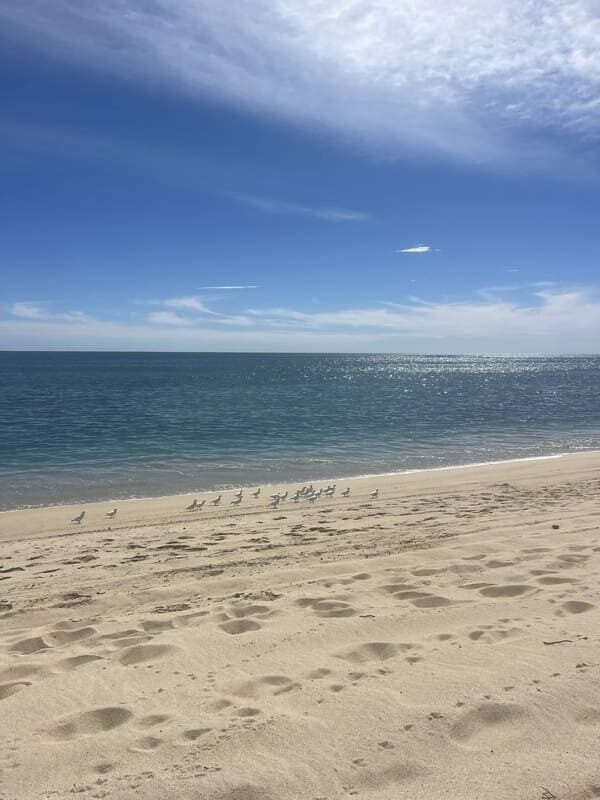
Photo: Audy Scala
There’s also the chance to spot dolphins, orcas, and even whale sharks cruising through during this time. The clear water, easy access, and peaceful vibes make it a favorite with freedivers, ocean lovers, and underwater photographers.
The town itself is quiet and welcoming, with a growing mix of cafés, eco-lodges, and yoga spots. It’s still relaxed and unpolished, but it’s slowly earning a name as one of Baja’s more interesting “hip” coastal spots—especially if you’re there for what’s happening in the sea rather than the scene on land.
Los Barriles
About two hours northeast of Cabo San Lucas, Los Barriles is where things start to feel wild again. If you’re after something that hasn’t been sandblasted into a resort town, this is it. The area’s remoteness means you’ll want a 4WD if you’re exploring off-track spots. The drive in—whether you take Highway 1 or wind along the coast—is half the fun.
From May to July, this is one of the best places to catch the mobula ray migration, with plenty of tours launching straight from town. When you’re not hanging with the rays, summer’s also prime time for surfing—another solid excuse to stick around.

Photo: Audy Scala
Even outside migration season, Los Barriles earns its keep. Winter brings whales, the snorkelling is great year-round, and if you’re into spearfishing or kiting, you’ll have options to keep you entertained. It’s quieter than the Cabo corridor, rougher around the edges in the best kind of way, making it perfect for ocean lovers who want to experience the magic of Baja without having to drop a bomb for it.
For something with a bit more soul than your standard stay, check out The Baja Station in nearby La Fortuna. It’s an off-grid community run by friends of mine, built around slow travel and meaningful connection. Think underwater sound meditation, sailing trips, a recording studio, and whale watching tours—all run by Gio, a marine biologist who studies underwater acoustics and marine mammal communication. It’s not your average tour outfit, and that’s exactly the point.
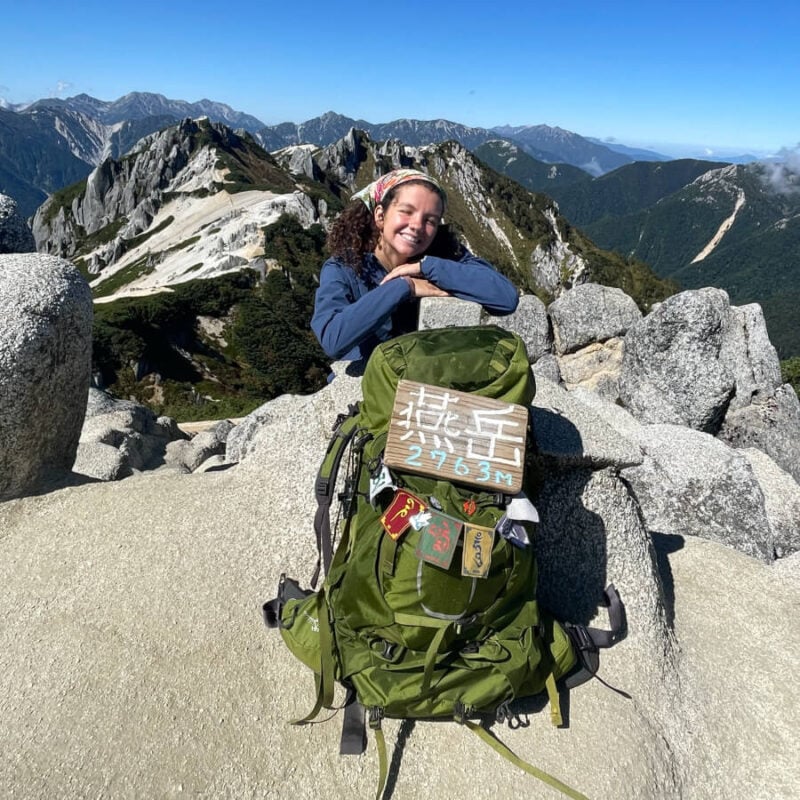
We’ve tested countless backpacks over the years, but there’s one that has always been the best and remains the best buy for adventurers: the broke backpacker-approved Osprey Aether and Ariel series.
Want more deetz on why these packs are so damn perfect? Then read our comprehensive review for the inside scoop!
View on OspreyCerralvo Channel
The Cerralvo Channel is a stretch of water that runs between the Baja California Sur mainland and Cerralvo Island (also known as Jacques Cousteau Island, depending on who you ask). It’s just off the coast from towns like La Ventana and El Sargento, and it’s one of the most biologically rich corridors in the Sea of Cortez.
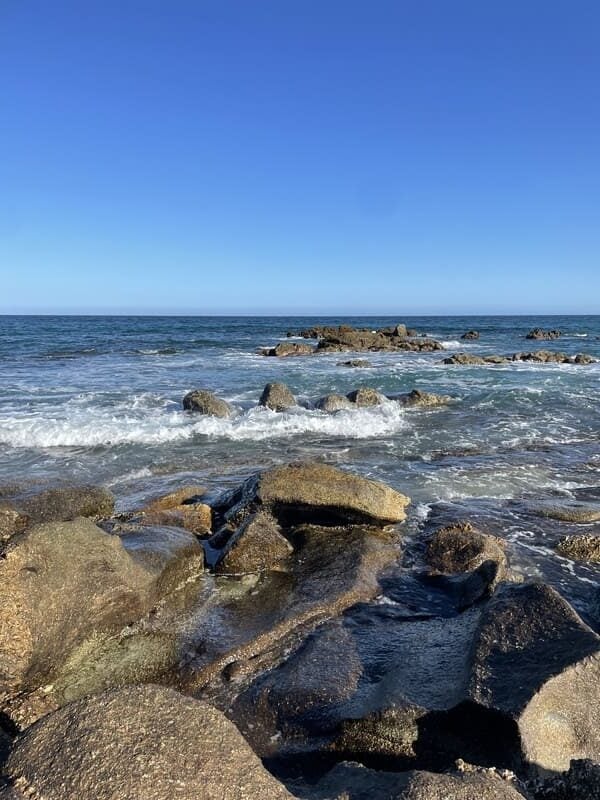
This channel is narrow, deep, and known for strong currents, which churn up nutrients from the seabed and create a buffet for all kinds of marine life. That’s a big part of why mobula rays gather here in such insane numbers from April to July. It’s not just mobulas, though, dolphins, whales, whale sharks, orcas—you name it, they pass through here at some point.
It’s also less trafficked than other, more developed spots, which means fewer boats, less noise, and more chance of a proper, raw encounter with the ocean at its best.
If you want to stay up close and personal with the Cerralvo Channel, I recommend staying in either La Ventana or El Sargento. Both are on the water and away from the main tourist traps you can often find in the Los Cabos Corridor. If you want simple, unfussy Mexican living with the ocean at your back door, this is where you’ll find it.
How to Interact with Mobula Rays Responsibly
If you’re going to jump in the water with these little devils, do it right. That starts with picking an eco tour operator that actually gives a toss. If they’re herding tourists like cattle or chasing the rays around with boats, that’s not an experience—it’s a red flag. Ethical, small-group operators are your best bet.
Mobula tourism is still pretty new, and how we behave now highly impacts whether this migration stays wild and wonderful. So if you want to play devil’s advocate (cue the sting), that means observing them without getting all up in their grill.
Here’s how not to be that person in the water:
- Stay at least 3 metres away when snorkelling.
- Don’t touch or ride them. Not cute, not cool.
- Steer clear of their cleaning stations—this is their spa time.
- Keep your fins under the surface—splashing like a toddler scares them off.
- No sudden movements. Keep it cool, calm, and collected.
- Approach from the side, not head-on. Let them do their thing.
- Groups of 10 max in the water. Less chaos = more connection.
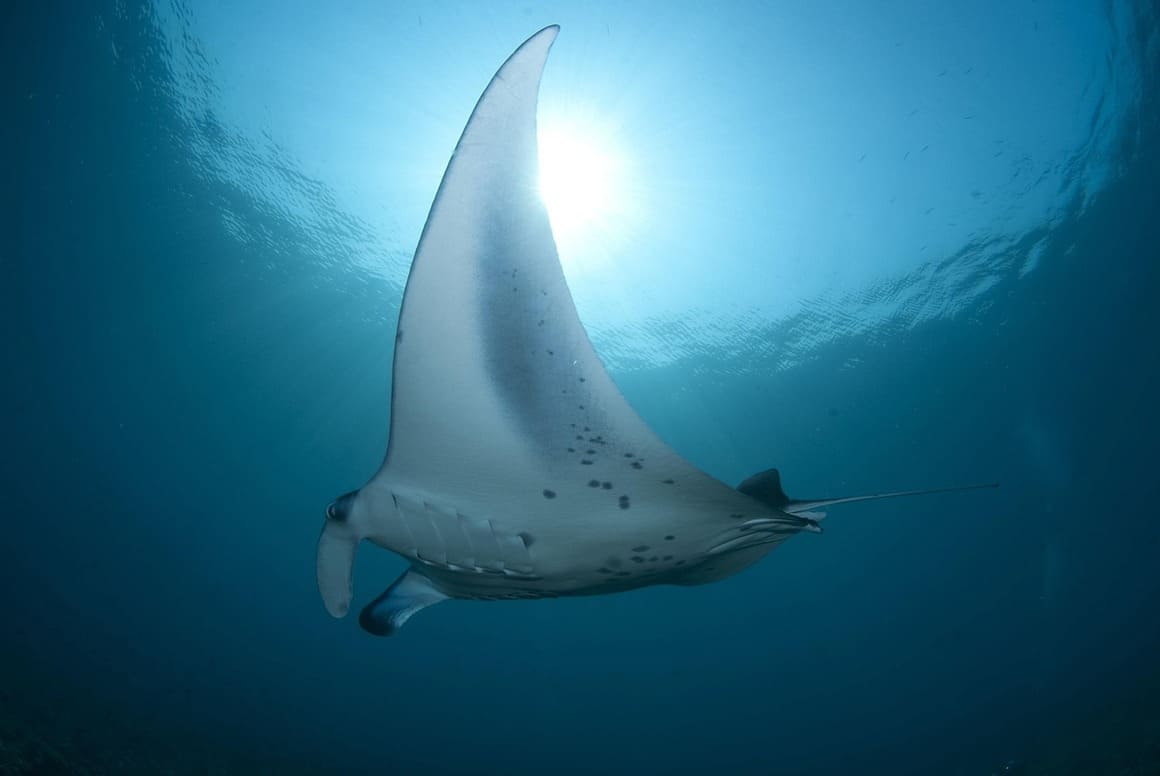
Most of this should be common sense, but unfortunately, sense isn’t always that common, especially once the GoPros come out. Mobulas might look all bravado when they’re breaching, but in the water, they’re skittish little ghosts. Move slow, keep calm, and let them lead the encounter. You’ll have a way better experience—and so will they.
Top Tips for Seeing The Mobula Ray Migration
So you’ve finally taken the plunge and booked that trip to Baja, and you’ve never been closer to being able to witness this mass mobula ray migration. Here are some tips on getting the most out of your experience.
- Go in season, but be flexible. You’re on ocean time here, the rays will rock up when they rock up. Booking a flexible tour will maximise your chances of seeing them in full swing. However, the best time to visit Baja to see them is between May and July.
- Dress for success. The water’s warm, but after hours floating around or sitting in a panga at sunrise, you’ll get cold fast. A 3mm wetsuit or a rash guard should do the job.
- Get up early. Mornings are usually when you’ll see the most action—less wind, fewer boats, and better chances of spotting rays and other marine life.
- Use your gear wisely. Flashes freak them out, and drones can disturb them from above. If you’re bringing tech, know how to use it properly or leave it on the boat.
- Book tours in advance. The Mobula Ray Migration season is short, and slots can book up fast.
- Learn to duck dive. It’s not necessary, but even basic free diving skills will completely transform your experience. The closer you are to the action (without disturbing it), the better.
- Wear reef-safe sunscreen. A rash guard is also a great option for sun protection.
- Don’t expect a show. This is nature in its rawest form, not a SeaWorld performance. Don’t be too disheartened if the ocean conditions aren’t right and you don’t see the theatrics you expected. It’s just motivation to go and try again!
- Choose an ethical tour operator. Look for outfitters with marine biologists, sustainability creds, and small group policies. This will maximise your chances of having a good time and not stressing the mobulas out.
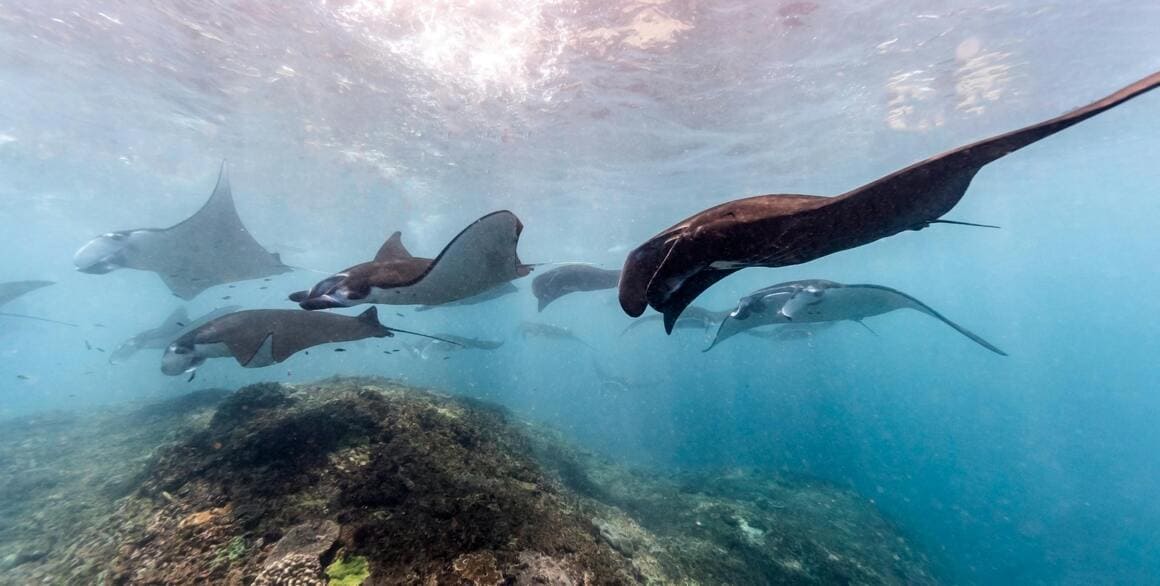
Where to Stay in Baja
Figuring out where to stay in Mexico? Maybe you want an authentic lil’ Mexican casita? Or a boujie resort to unwind after a day on the water? Here are a couple of my favorite digs in the area, no matter what type of traveler you are.
Susu’Z Village Hostel and Rooms | Best Hostel in Baja
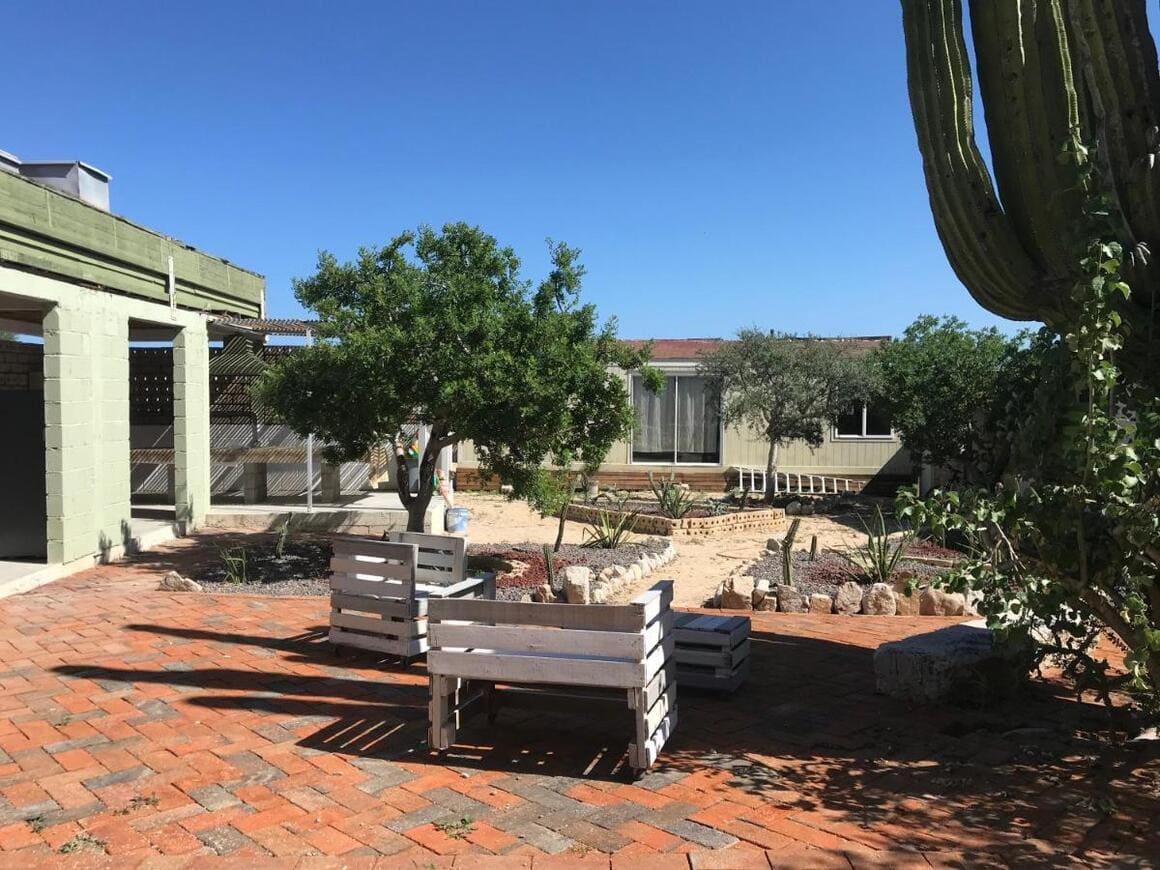
Hostels weren’t a thing when I was first in Baja, and let me tell you, it is a VERY welcome addition. Finally, a budget option for backpackers in La Ventana, this hostel has a super chill vibe with great community spaces. The owners are legends and have thought of everything you need for a comfortable stay. Who said you can’t do Baja on a budget? If you’re solo travelling in Mexico, this is the spot.
The Baja Station | Most Unique Stay in Baja
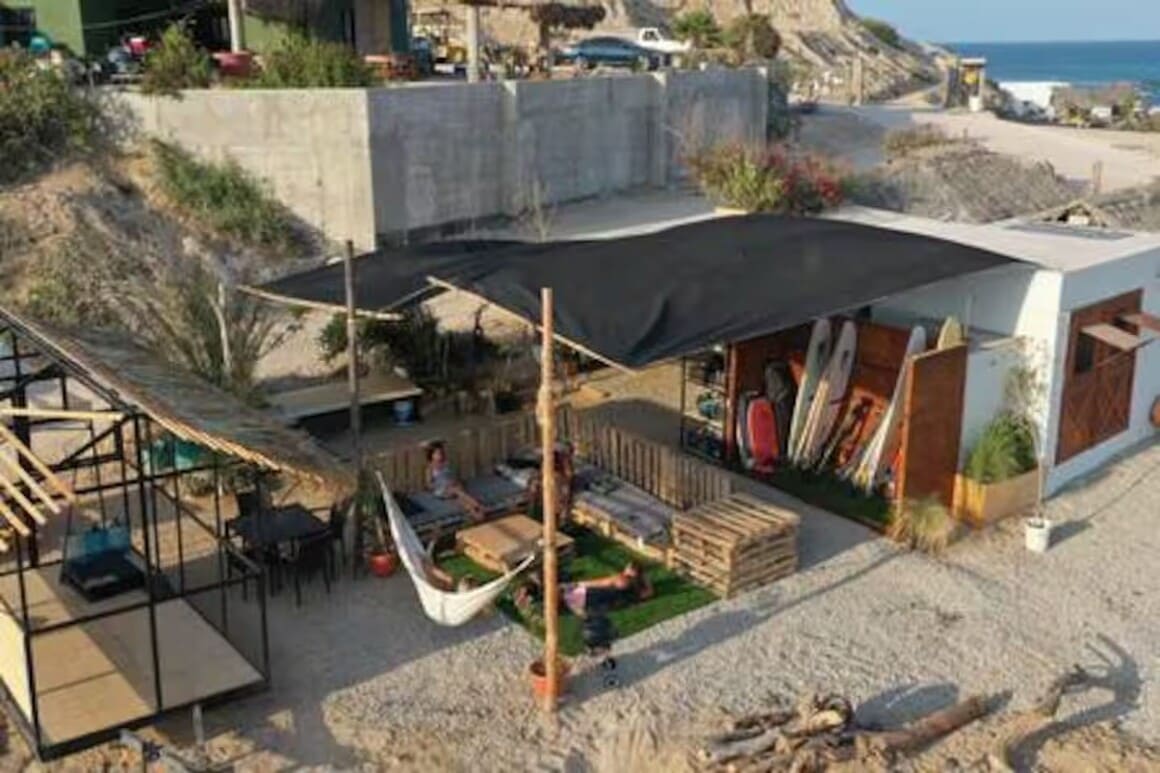
The Baja Station is a stripped-back, off-grid hideout built for travelers, surfers, and creatives who like their stays with a bit of soul. Tucked away in La Fortuna, The Ranch House is your rustic beachside base—equal parts boho, barefoot, and warm vibes. It’s got that warm, lived-in charm that makes you feel right at home, with just enough comfort to keep you grounded and inspired. It’s simple, unfussy, and has everything you need to soak up the magic that is Baja.
Punta Pescadero Paradise Hotel & Villas | Best Resort in Baja

If you’re happy to spend a bit more, this spot in Los Barriles is well worth the splurge. You’ll get sweeping ocean views, free kayaks and SUPs on the beach, proper loungers with shade, and huge clean rooms with coffee, water, and all the basics sorted. If luck’s on your side, you might even catch mobulas breaching offshore or whales gliding past while you’re sipping your morning coffee. You’re basically sleeping on the shoreline—short of pitching a tent in the surf, you won’t get closer.
ChiloChill Glamping Resort | Best Glamping in Baja
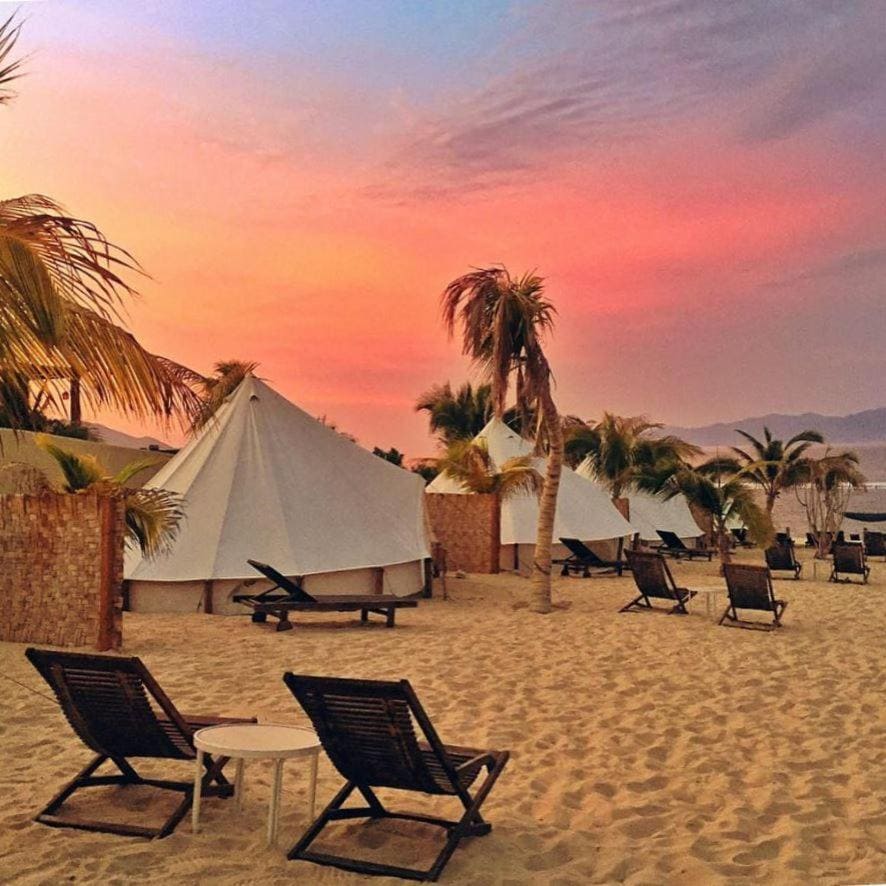
If you’re after nothing but sand, sea, and space to breathe, this glamping spot in La Ventana hits the mark. It has all the luxuries of glamping, PLUS you don’t have to worry about forgetting the tent poles. You’re pitched right on the beach, so the ocean’s your front yard and the mountains are your backdrop. Sunrises hit different out here, and the whole setup’s got that laid-back, off-grid charm that makes it hard to leave.
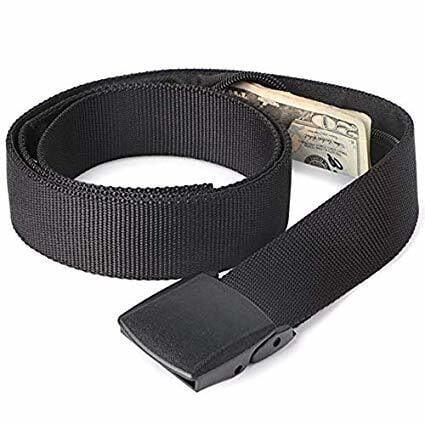
Stash your cash safely with this money belt. It will keep your valuables safely concealed, no matter where you go.
It looks exactly like a normal belt except for a SECRET interior pocket perfectly designed to hide a wad of cash, a passport photocopy or anything else you may wish to hide. Never get caught with your pants down again! (Unless you want to…)
Hide Yo’ Money!FAQs about Mobula Ray Migration
Still confused about seeing these little devils migrate in Baja? No stress, I’ve got the 411 wrapped up just below for ya!
Don’t Forget Travel Insurance for Baja
Mexico is a safe country to visit. But, besides, you can’t plan for everything. Believe me, if things don’t go to plan, solid travel insurance is invaluable.
ALWAYS sort out your backpacker insurance before your trip. There’s plenty to choose from in that department, but a good place to start is Safety Wing.
They offer month-to-month payments, no lock-in contracts, and require absolutely no itineraries: that’s the exact kind of insurance long-term travellers and digital nomads need.
SafetyWing is cheap, easy, and admin-free: just sign up lickety-split so you can get back to it!
Click the button below to learn more about SafetyWing’s setup or read our insider review for the full tasty scoop.
Final Thoughts on the Mobula Ray Migration in Baja California
Heading to Baja to catch the mobula ray migration feels like a pilgrimage for anyone obsessed with the ocean. It’s one of those rare natural wonders most people only see on documentaries, so being there in person is a real privilege.
This barely scratches the surface of Baja’s magic. The trips out on the water are nothing short of otherworldly—real moments connecting with the ocean and its wild residents. If you want a genuine, close-up experience with the Sea of Cortez’s creatures, these are the people to trust.
So, gear up with your snorkel and GoPro, and brace yourself for whatever wildness Baja throws at you. And don’t forget to say hi to the rays for me!
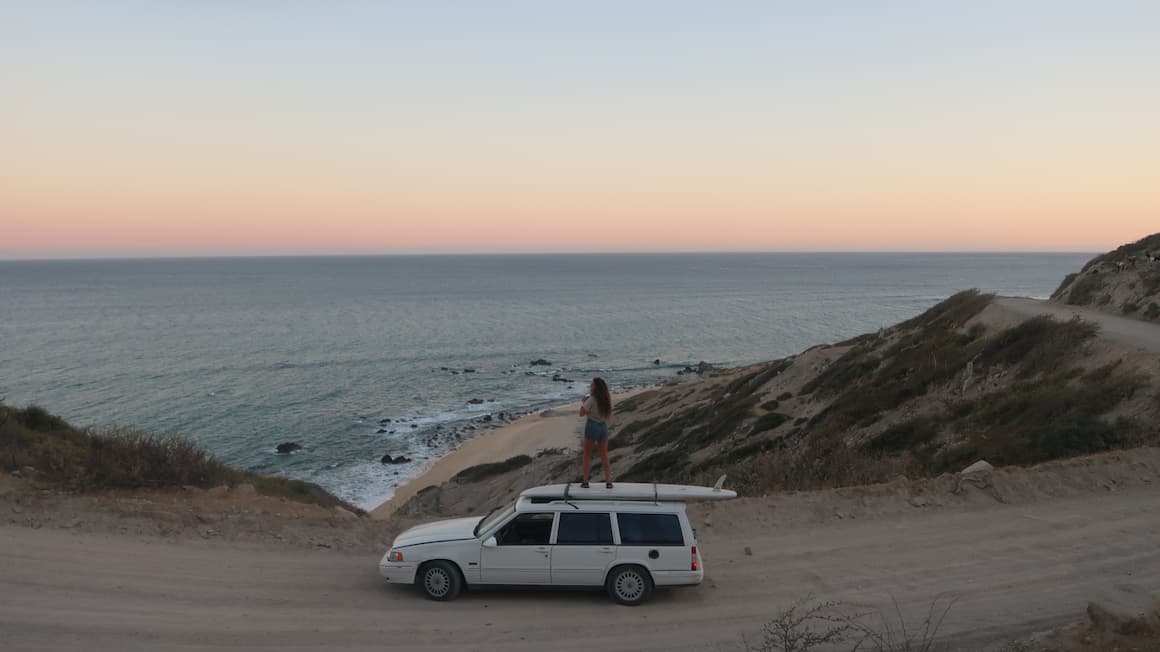
Photo: @amandaadraper
Buy Us a Coffee!
A couple of you lovely readers suggested we set up a tip jar for direct support as an alternative to booking through our links, since we’ve decided to keep the site ad-free. So here it is!
You can now buy The Broke Backpacker a coffee. If you like and use our content to plan your trips, it’s a much appreciated way to show appreciation 🙂



